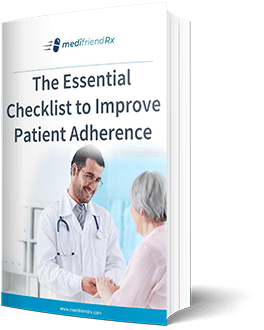Learn exactly what affects patient adherence and how to improve it within your clinic or health center using a simple 6-step checklist.
Patient adherence is key to improving health outcomes, patient experiences, and CMS star ratings, but it can often be a pretty big hurdle for many organizations in the healthcare and medical fields.
While many patients are becoming more aware of their health in this digital age, there is still a large majority of patients who are overwhelmed and have a hard time sticking to a medication schedule.
But, how can you help them maintain a healthy lifestyle AND improve your adherence rates?
The answer is to implement holistic patient adherence initiatives that address the root of the problem, rather than just the symptoms.
Based on industry-leading best practices, this handy checklist will:
Read the first step below and download a copy of this FREE checklist to start improving patient adherence and experience across your organization today!

Download your copy of the patient adherence checklist by telling us a little about yourself.
Why it matters:
Studying non-adherence can be tough. The same people who don’t adhere to treatment plans often don’t participate in research aimed at discovering why.
The few robust trials out there which do examine the causes of nonadherence show us that adherence is complex; interventions that work well for one organization might not be as effective at others.
Adherence varies widely across conditions and care settings. Cancer care sees very different adherence rates than mental health treatment, and emergency room patients often have different barriers to care than chronic care center patients.
Understanding the basics of evidence-supported patient adherence projects (such as are provided here) is an essential starting point.
What to do now:
Conduct a survey of your providers and administrators to discover what they see as the biggest barriers to patient adherence for YOUR patients.
Read the other five steps and get the complete checklist by downloading the guide below: